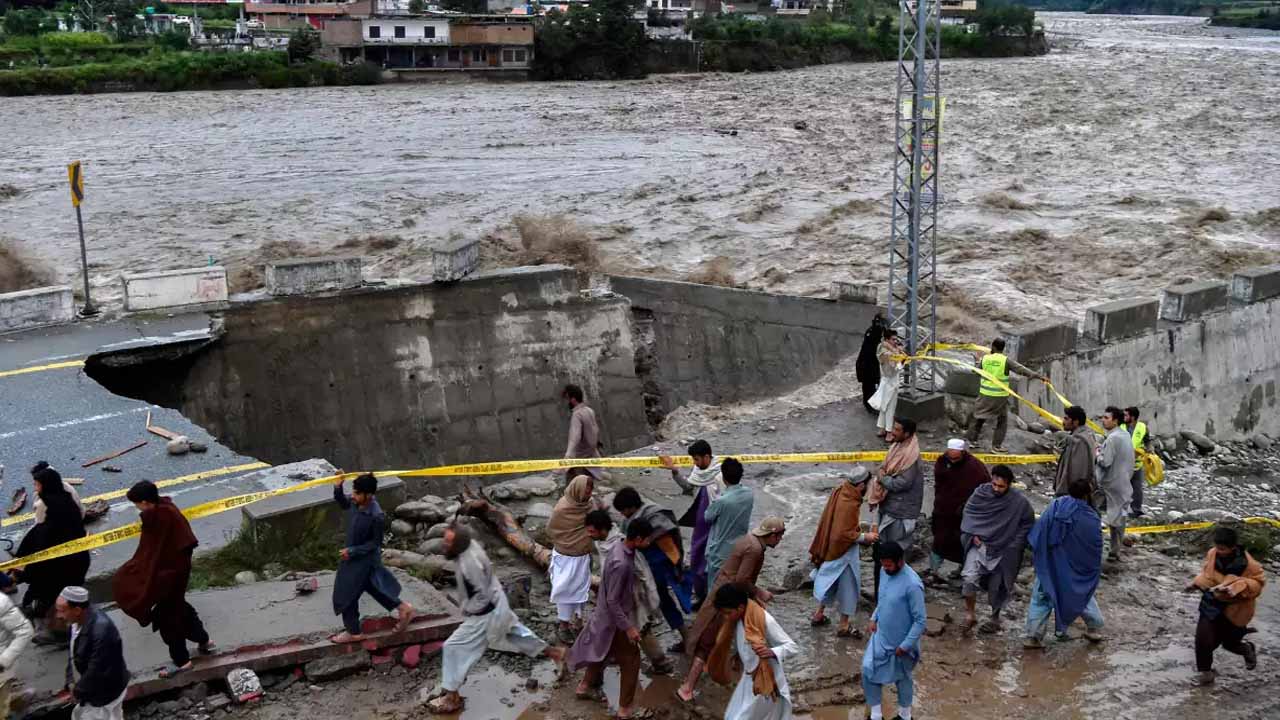Leading international agencies have warned of a significant rise in poverty levels, and growing fiscal and external account deficits amid political and economic instability, with flood damage and loss estimates reaching over $30 billion (about Rs6.5 trillion).
Based on these estimates, Pakistan wanted “climate justice” investments in recovery and climate adaptation initiatives and a relaxation of the International Monetary Fund’s (IMF) requirements.
The Post-Disaster Needs Assessment (PDNA) — is conducted jointly by the:
- World Bank (WB)
- Asian Development Bank (ADB)
- United Nations Development Programme (UNDP)
- European Union with the support of the Pakistan government — called for coordinated international support for $16.3bn (Rs3.5tr) funding for recovery and building disaster resilient economy, infrastructure, and institutions to fight the rising challenges of climate change
The PDNA report noted that Pakistan’s commitment to accelerating reforms would be crucial to generating more domestic and international resources for efficient and effective utilization. “Given Pakistan’s limited fiscal resources, significant international support and private investment will be essential for a comprehensive and resilient recovery,” it added.
The report was formally released at a ceremony presided over by Planning Minister Ahsan Iqbal, who asked the IMF to grant Pakistan permission to use its development funds for disaster recovery. He specifically criticized the requirement that at least 40% of the development budget be spent only in the final quarter of the fiscal year as being unwarranted in light of the current situation and urged its revision.
Sherry Rehman, Pakistan’s minister for climate change, stated at the time that Pakistan had intensified its efforts to present a case for “climate justice” at the COP27 climate summit in Egypt next month.
The PDNA report made clear the shortcomings of Pakistani institutions and systems in terms of urban planning, water management, infrastructure upkeep, governance structures, and capacity for risk management and reduction, but it also noted that the devastating flooding was a “one in a 1,000-year” event that exposed these flaws even more.
It pointed out that underlying political and economic instability was exacerbating the disaster impacts and undermining the effectiveness of recovery when a more resilient nation was critical to breaking the cycle of disaster-induced poverty. Simultaneous multiple shocks, including natural hazards, Covid-19, rising inflation, an energy crisis, and fiscal challenges, continue to compound the impacts.
According to the report, “Overall GDP decrease as a direct result of the floods is anticipated to be roughly 2.2pc of FY22 GDP.” Value-added agriculture, one of the major industries, is anticipated to see the largest reduction, falling by 0.9 percent of FY22 GDP, since floods have the greatest impact on the crops of cotton, dates, sugar cane, and rice. In addition, it is estimated that almost a million sheep and cows perished.
In addition, the industrial and services sectors are anticipated to be impacted by damage to the agricultural sector. Since local cotton makes up roughly half of the industry’s necessary input of cotton, flood-related cotton losses are anticipated to have an impact on the domestic textile sector. Over half of all exports of goods and about a quarter of industrial production are made up of textiles.
The anticipated decrease in food crops and decreased availability of livestock will also have a detrimental effect on the regional food processing and slaughtering businesses. As a result, it is anticipated that the value-added industry sector will lose 0.7 percent of GDP from the previous fiscal year. Equally, decreased wholesale and transportation service operations, which make up about half of the service sector’s production, are anticipated to be negatively impacted by decreased agricultural and industrial activity.
The development partners emphasized that the disaster would have a significant impact on people’s lives and means of subsistence because, according to preliminary PDNA estimates, the floods will directly cause between 8.4 and 9.1 million people to fall into poverty, increasing the national poverty rate by 3.7 to four percentage points.
The lending agencies insisted that there could be no leniency to reforms to generate additional domestic resources. In a nutshell, the assessment estimated total damages to exceed $14.9bn (Rs3.2tr), and total economic losses to reach about $15.2bn (Rs3.3tr).




